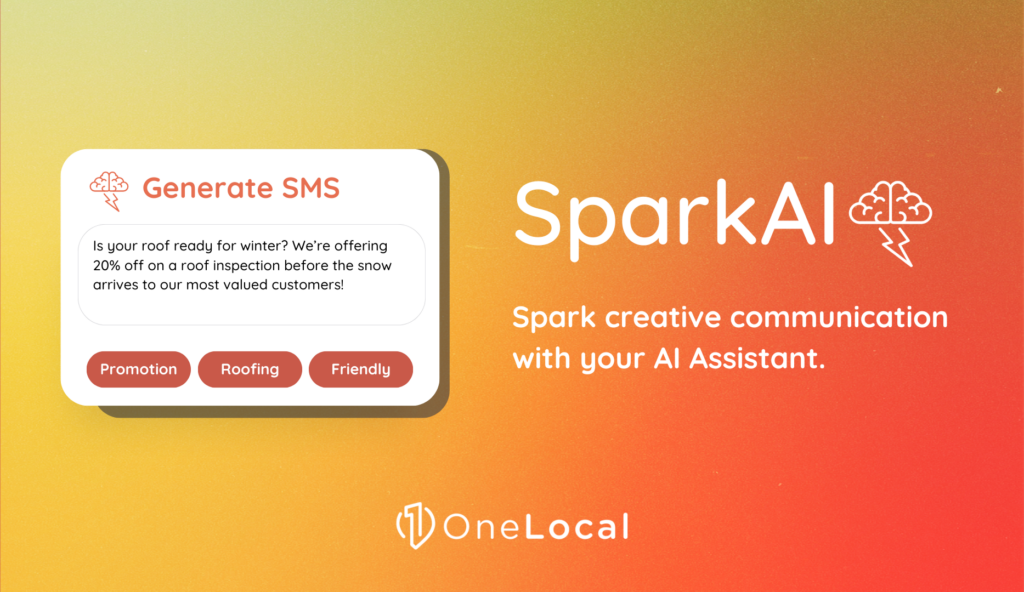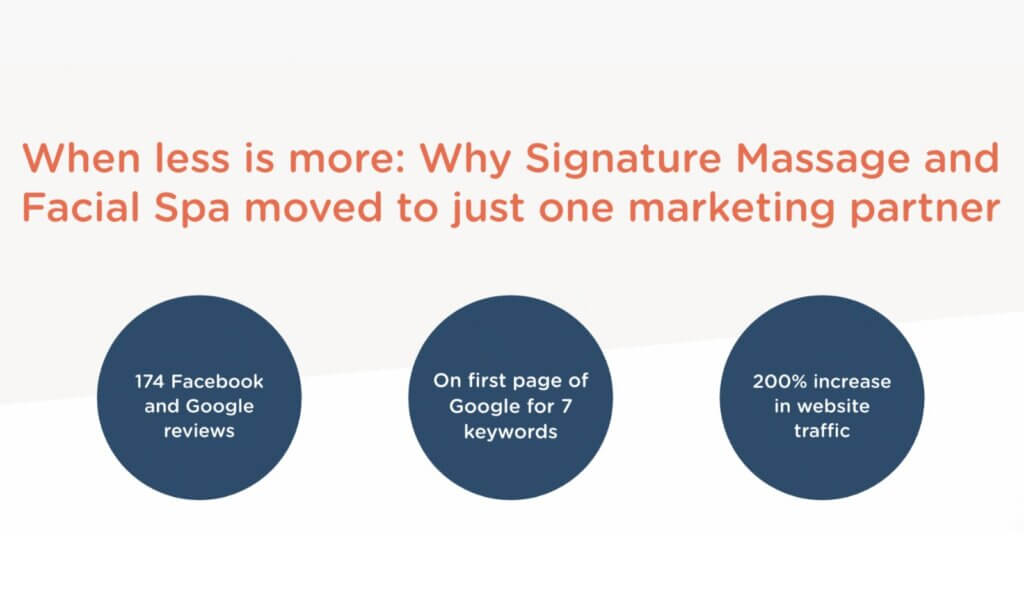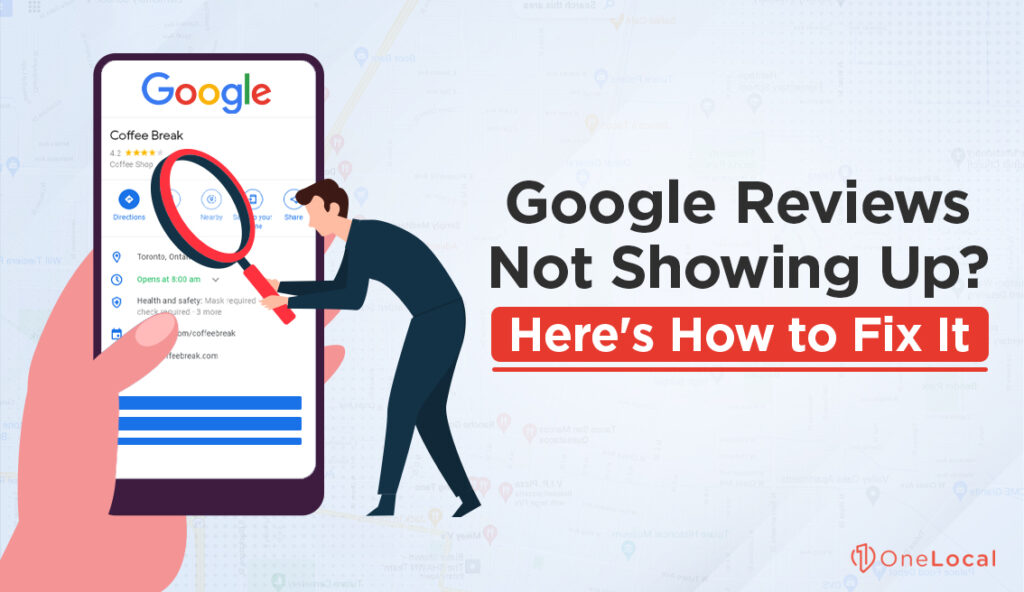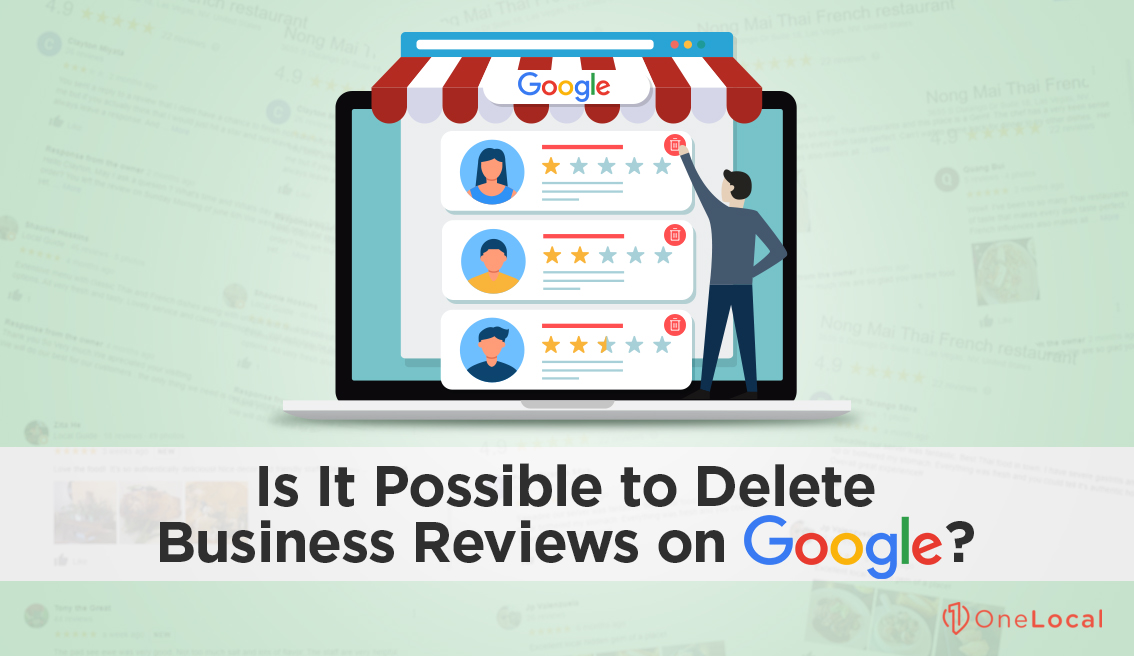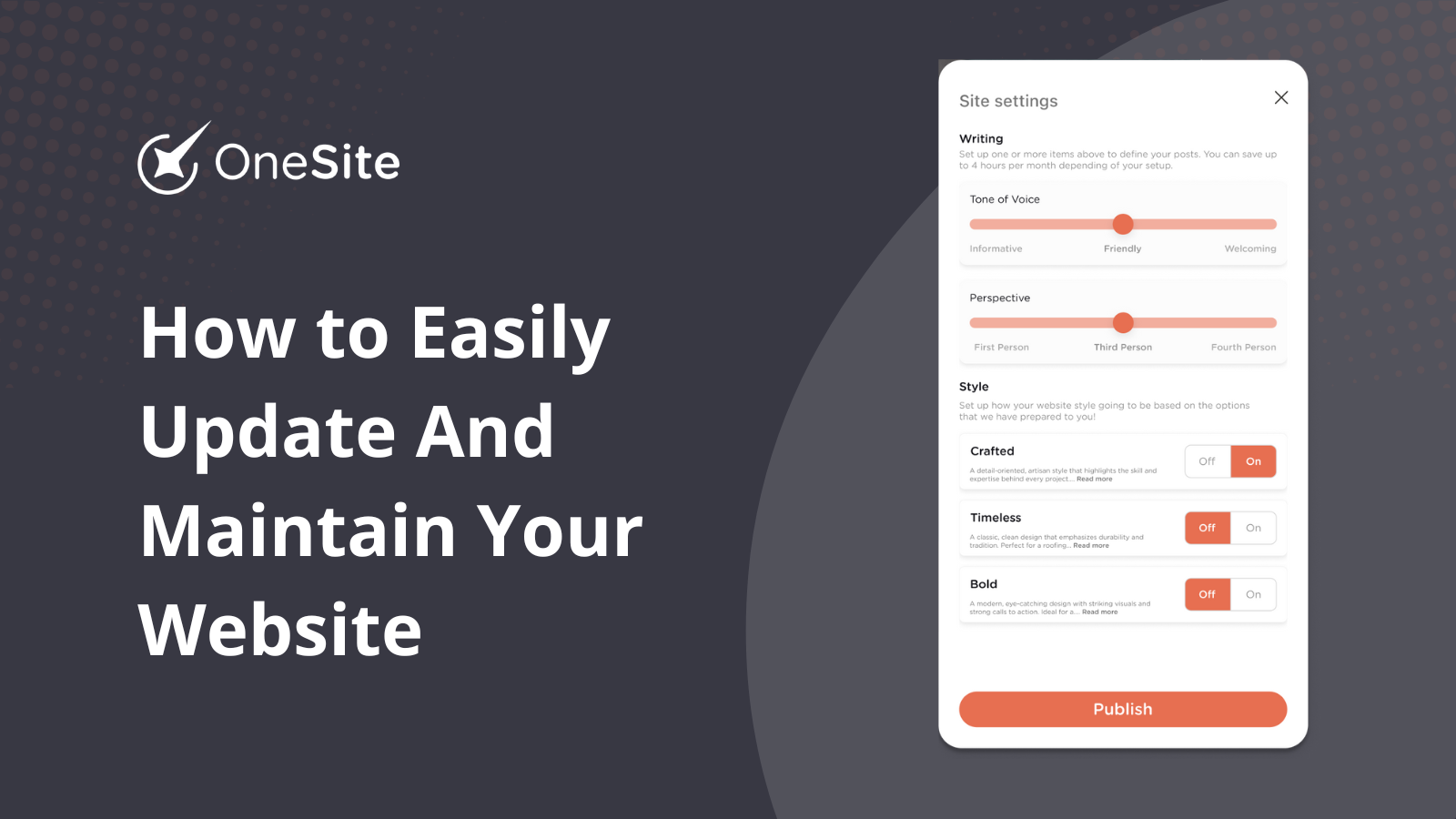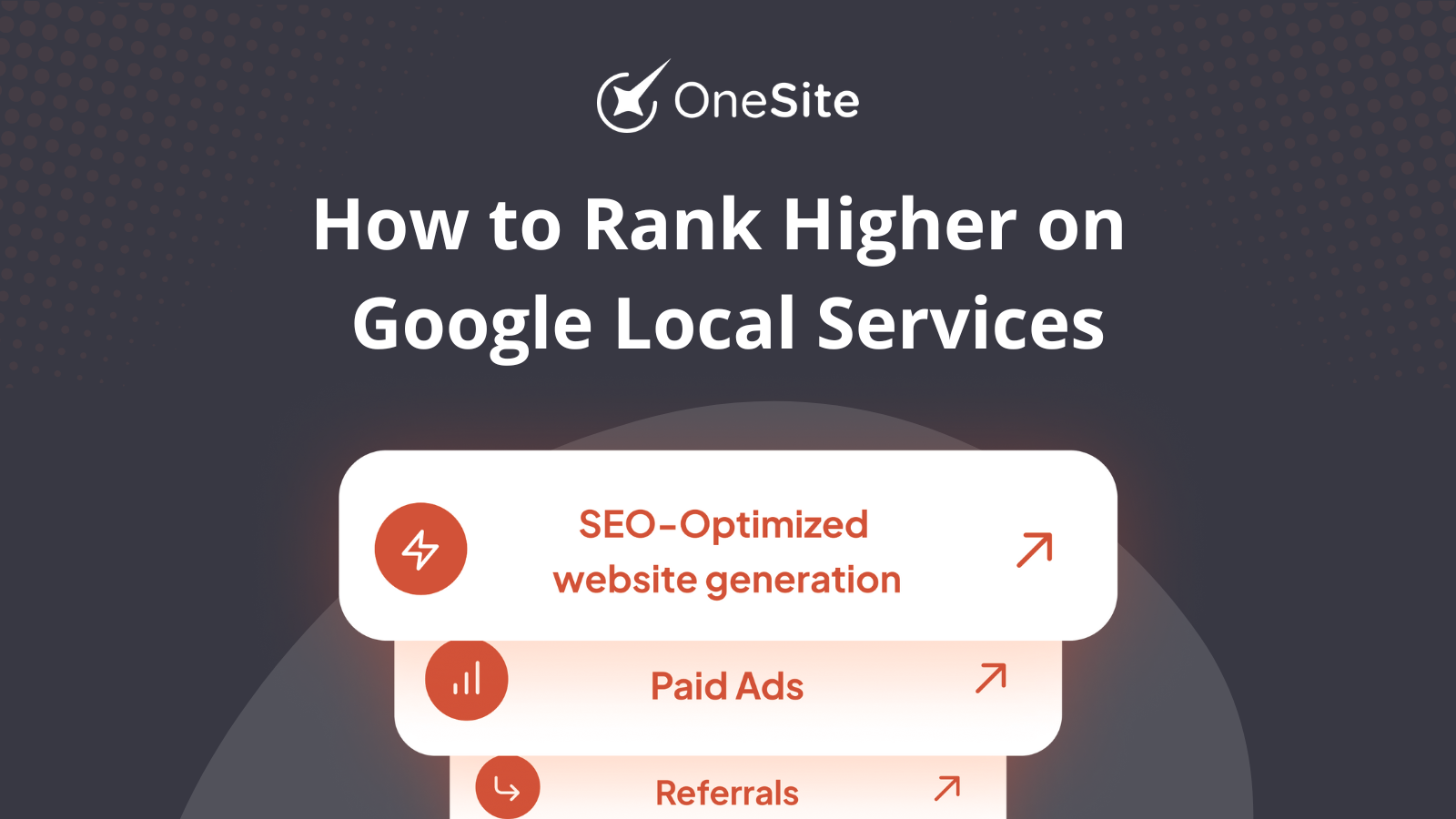Can you delete business reviews on Google?
Google is the great aggregator and indexer of all things online. Whether it’s their index of websites or their map system with indexes of physical locations, it’s no wonder why billions of people turn to it when they have a question that needs answering, including if you can delete business reviews on Google.
In their constant quest to provide all possible information for every search, Google created the ability to leave reviews for a business through their My Business system. Anyone with a Google account can leave a review of a business. More, if they visit that business and own an Android phone, they may even get a push notification asking them to leave a review. Google actively solicits these reviews.
Unfortunately, Google doesn’t necessarily do much work in making sure those reviews are legitimate. They certainly don’t verify whether or not a review is real or fake based on the content of the rating.
So, what happens if you – a humble business owner – find that you’re getting fake reviews? You want to get rid of them, but can you delete business reviews on Google?
The answer may be yes, but it’s tricky. Google has a few limited systems in place that you can use, but you only have limited options available to you. To be precise, there are four of them.
Here are your options, as well as some instructions to get you started on each method.
Before We Begin
Before you can take action to delete business reviews on Google, you need to make sure that you have the groundwork in place. Specifically, you need to have created a Google My Business account and claimed your Business Profile.
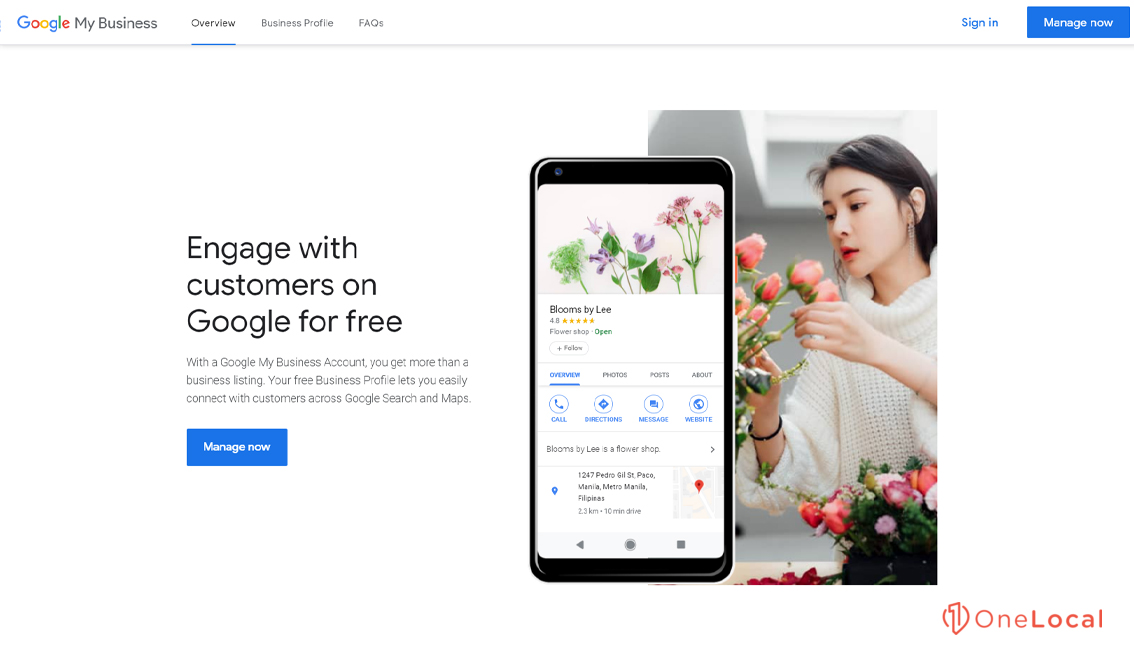
Once you’ve claimed your profile, you’ll be asked to verify it. The verification process typically involves a text, a phone call, or a postcard sent in the mail, so make sure to get this done ahead of time.
The reason for this is that you can’t manage your reviews unless you’ve verified ownership over the business profile. Without that crucial verification, you’re just another Google user, and you don’t have any authority to delete business reviews on Google as a standard user.
Here’s how to delete business reviews on Google:
Option 1: Content Policy Violations
The first and most traditional option for removing a review is when it violates one of Google’s content policies. You can read through the complete content policies here, but we’ll summarize them for you below.
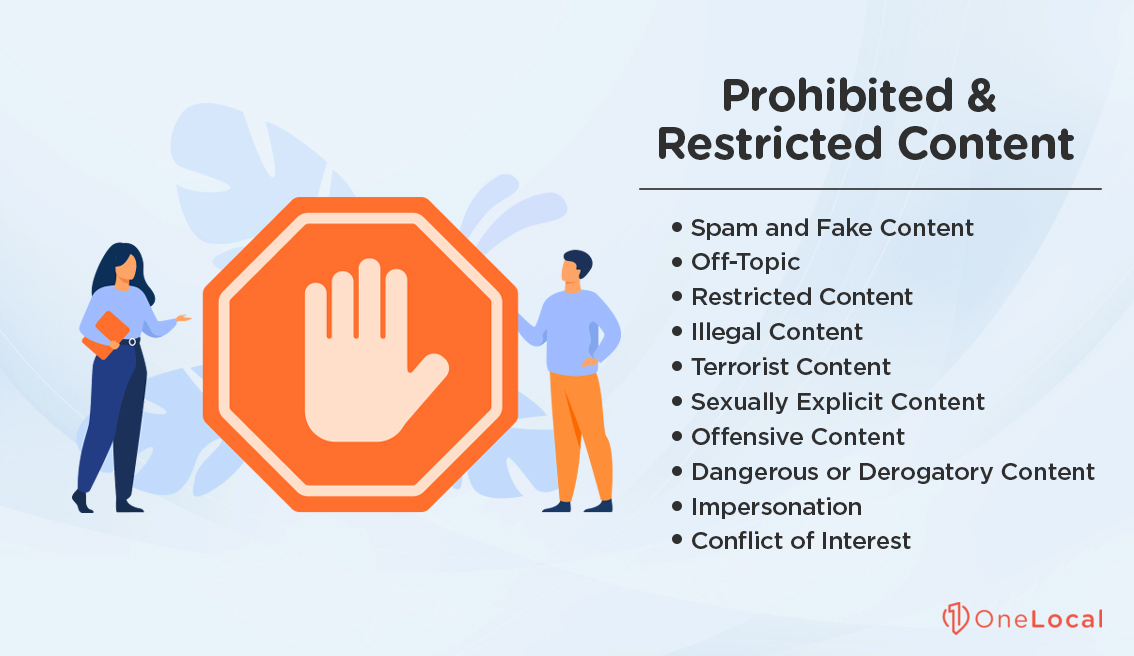
Google has ten “categories” of why a review might violate its policies and be worthy of removal. These are:
- Spam and Fake Content. A spam review is removable, and a review that does not reflect reality is considered fake and can be removed, though it may be hard to prove in some cases.
- Off-Topic. If a review gets into a rant (especially about social or political issues), it can be removed for not being relevant to the business being reviewed.
- Restricted Content. Reviews that include images or links to prohibited content can be removed. These include things like alcohol, guns, adult services, or financial services. Google also restricts links to landing pages for these products/services, contact methods such as emails or phone numbers to buy them, or promotional deals such as coupon codes.
- Illegal Content. This section pertains to anything that violates copyright or other legal rights, sexually abusive content, anything about criminal acts like organ harvesting, illicit products like drugs or endangered animal products, violent images, or terroristic content. The vast majority of businesses won’t have to deal with this, thankfully.
- Terrorist Content. Terrorist organizations are not allowed to use Google’s services for obvious reasons.
- Sexually Explicit Content. While Google will happily index adult content and legal adult services, their more public-facing services like reviews do not allow explicit content on them.
- Offensive Content. Google says, “We will remove content that contains obscene, profane, or offensive language or gestures.”
- Dangerous or Derogatory Content. Any reviews that threaten harm to others, that display bigotry or hatred, harass individuals or groups, or incite violence can be targeted and removed. As a business owner, you can draw attention to these so that Google can remove them.
- Deceptive content, false advertising, or pretending to represent another business, organization, or individual that you don’t work for can get the content removed.
- Conflict of Interest. A business owner reviewing their own business, an employee reviewing their employer, or a competitor are examples of reviews and can get a rating removed.
So, the first thing to do is check if the review you want to be removed falls into any of those categories. If it does, you can flag the review as inappropriate and submit it to Google’s systems to get it removed. You can do this in three ways.
1. Choose your location from your Google My Business account, find the review, click the three dots button for more options to delete business reviews on Google, and flag the review as inappropriate.
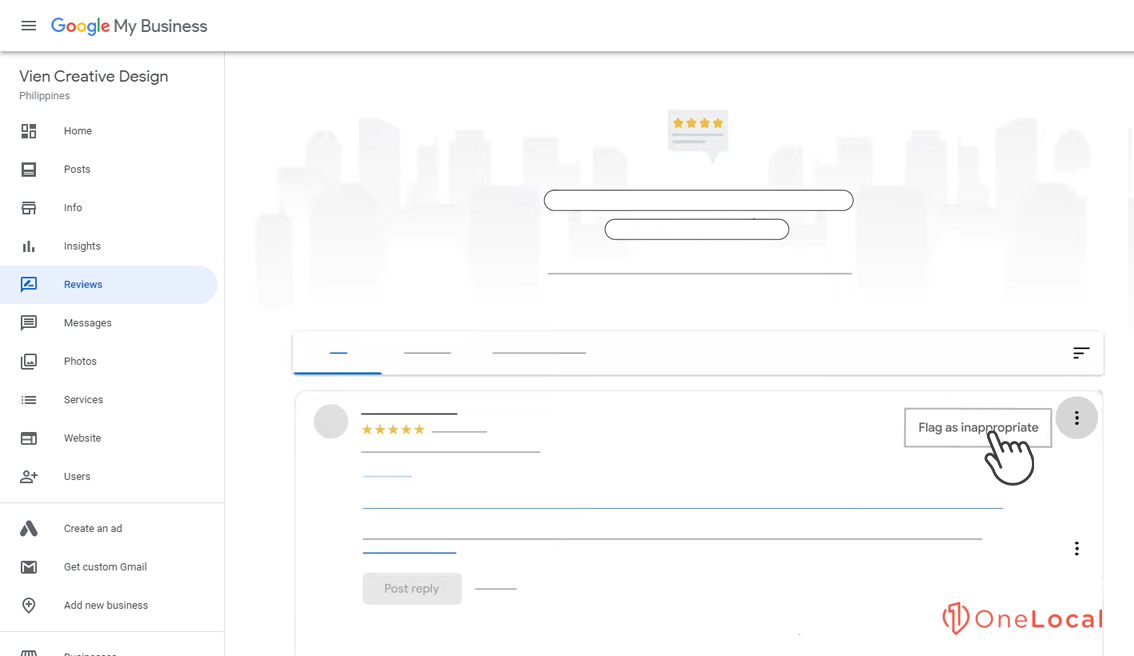
2. From Google Maps, find your business location, locate the review you want to be removed, click the three dots, and flag it as inappropriate.
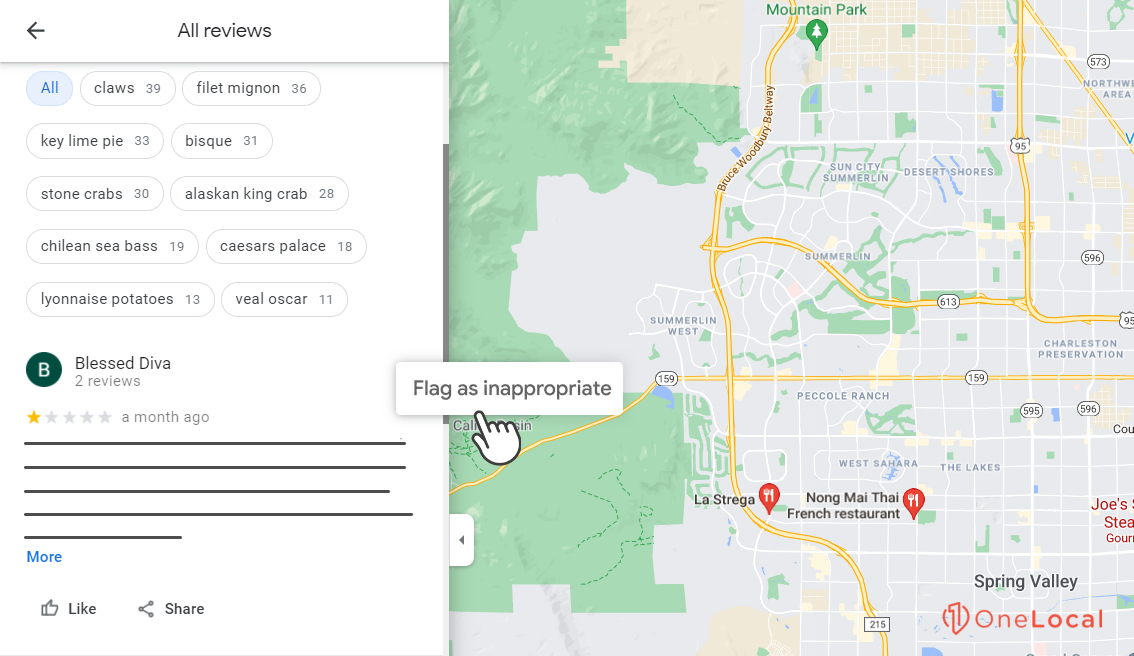
3. From Google.com, search for your business and locate the business profile. Find the review, click the three dots to delete business reviews on Google, and flag it as inappropriate.
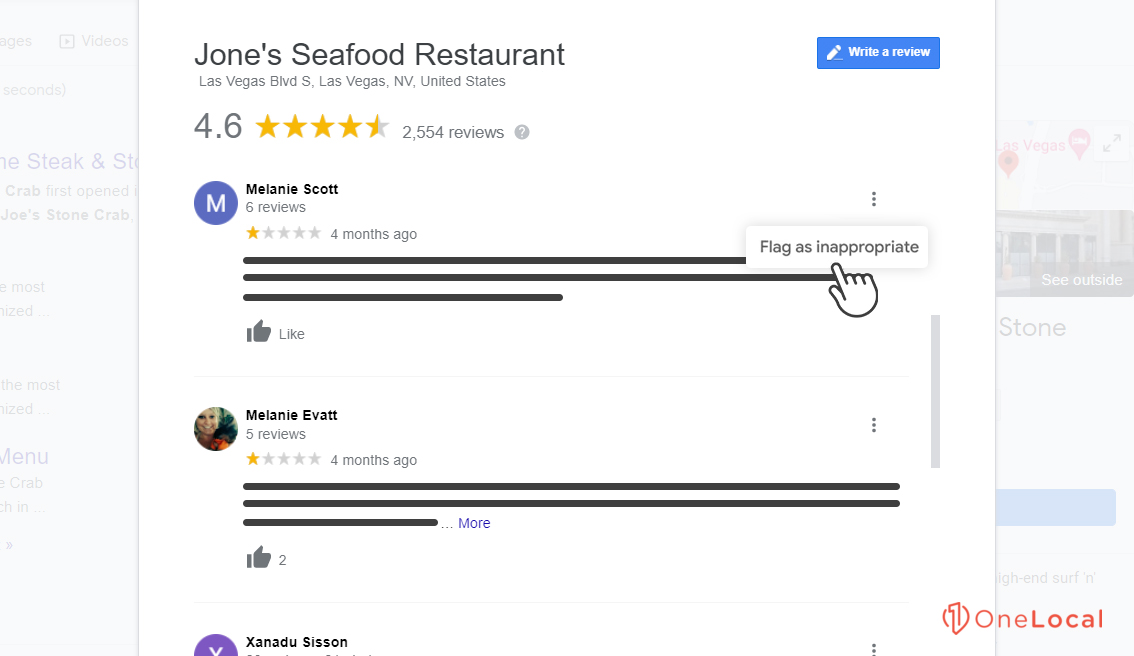
Once you submit the manual review, it will take a few days to be processed and for Google to determine if they should remove it. If it is found to violate the content policies, it will be removed. Otherwise, it will stay.
Option 2: Asking the User
The one guaranteed way to delete business reviews on Google is if the person who posted it originally deletes it. So, why not see if you can make that happen?
A crucial part of reputation management is learning how to deal with poor or unfavorable reviews. Reaching out to users who have had a bad experience, working with them to improve their situation, and asking them to edit their negative feedback to reflect their authentic experience is a necessary process.

Unfortunately, this only works with reviews that are negative but real, not fake. And, of course, some users will choose to hold firm and won’t be willing to work with you to find a solution. Many, however, will be glad to work with you. In fact, from a user’s perspective, leaving a bad review in hopes of getting more direct customer service is a tactic employed by thousands of people every day.
So, here’s how you do it.
- Verify the details of the situation. See if you can match the user to your customer database. Check to see if there are any support tickets with that user, and proactively address them if so.
- Reply to the review. Be apologetic, don’t downplay their feelings or their issue, and ask for more details as necessary. Offer direct contact with a support agent if relevant.
- Do your best to rectify the situation. This step may or may not be possible depending on the specific situation. For example, a store might offer a replacement product at no cost, but a restaurant might not provide anything more than a gift card or a refund.
- Once the situation is resolved to the user’s satisfaction, politely ask them to edit their Google review to reflect the solution or remove it if it’s no longer applicable. If they do not edit or remove it, you can leave your reply to reflect the situation and explain it to other users.
This method is a time-consuming process and involves being able to make decisions that support customer service. As such, it’s a good idea to check if there are systemic issues that would cause more reviews of this type to happen and solve the problem at a higher level than individual customers.
Option 3: Contact Google Directly
Suppose you’re unable to delete business reviews on Google through the automatic process, and you’re unable to get the user to respond to your requests. In that case, you might be able to contact Google directly and ask them to look at the situation more closely.
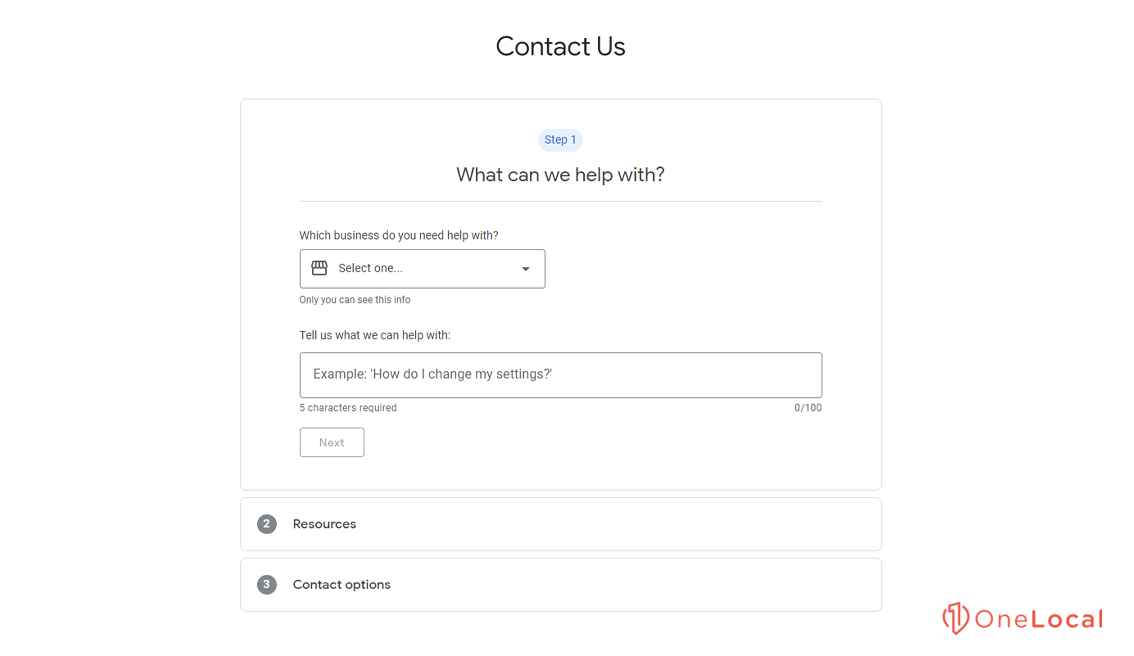
Before you do this, gather information:
- Take a screenshot of the relevant review. If you’re dealing with numerous reviews you want to be removed, screenshot them individually.
- Gather information relevant to the case. For example, if you can prove the user has never been a customer, that is important information to note. If the user has a history of leaving negative reviews for a wide range of companies, or if they seem to fish for coupons or “compensation” somehow, individual reviews might not violate policies, but the overall behavior does.
- Once you have your information gathered, click this link and fill out the form. This link will take you to the Google My Business helpline. The final step of the form allows you to pick a contact method, though which methods you have available may vary.
Google is currently working with a limited support team due to the pandemic and is taking longer than usual to respond. In a normal situation, they typically respond within 1-2 days. Currently, it may be longer. Be patient; they will get to you eventually.
A popular recommendation is to take your problem to Twitter. To be precise, follow the @GoogleSmallBiz account and send them a DM about your issue. This strategy is the “do unto others” method; that is, you are the customer demanding attention in this scenario. Some people succeed with this method, while others do not, but it may be worth a try.
Option 4: Legal Removals
If all else fails when trying to delete business reviews on Google, there’s the possibility that you may be able to leverage the law to get a review removed. There are two applicable laws you might be able to use.

The first is the Digital Millennium Copyright Act or DMCA. This strategy is applicable if a review is a violation of your intellectual property. Usually, this should apply in option one and get a review removed, but sometimes Google will miss it. Filing a DMCA request can get a review removed.
The second is laws against defamation. Defamation is a civil case (rather than criminal) and requires being willing to pursue legal action against a reviewer. It is not to be taken lightly! You can find Google’s process for legal requests here.
Since defamation is so difficult to prove and enact, you may want to read more into it before considering it. You can read more about it here. You may also consider consulting with a lawyer to see if you have a strong case.
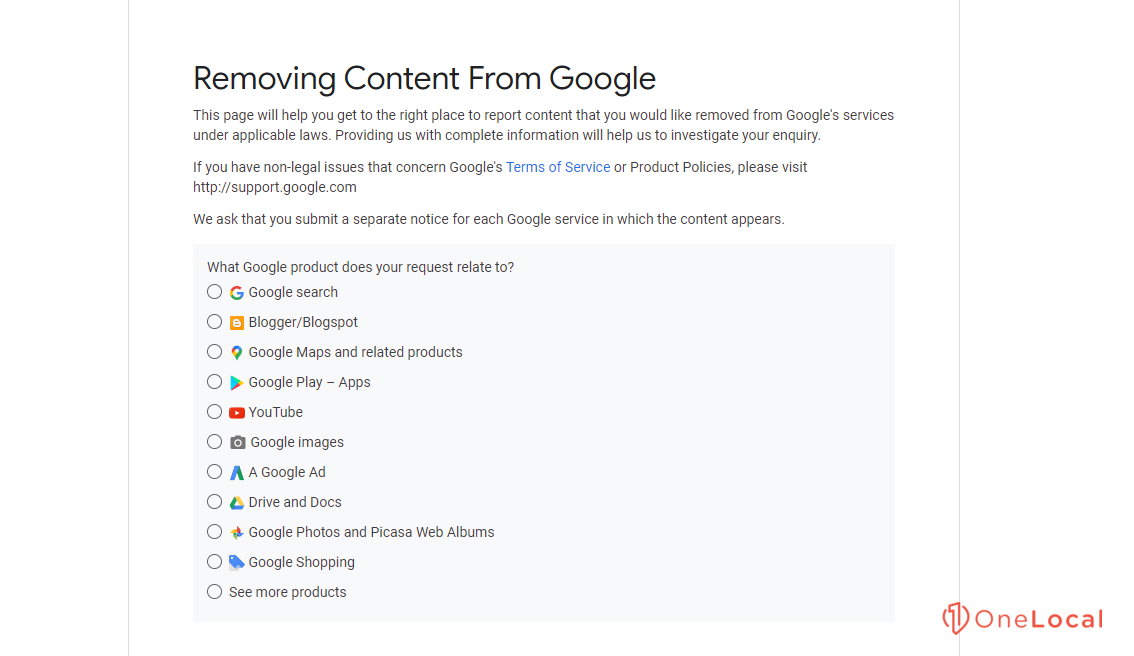
Now, just because you’re willing to pursue legal action doesn’t mean you’ll have to. The threat of legal action is often enough to delete business reviews on Google, so Google doesn’t have to otherwise deal with it. However, that’s not guaranteed, so if this gets handed over to Google’s law firm, it would be a good idea to have an attorney of your own to communicate with them. In these situations, the legal teams exchange words, and hopefully, they decide that removing your fake reviews is a better outcome than potentially landing in court.
This strategy should only be saved as a last resort for the most egregious instances of fake or harmful reviews that you’re unable to get removed. Thankfully, there’s one last method:
Suppressing Negative Reviews
The unfortunate truth is that, reasonably often, you aren’t able to remove your negative reviews. Either it’s too difficult to prove that a review is fake, the process fails, or the reviews are from legitimate people, and you can’t otherwise deal with the situation.

The best way to handle this situation is to bolster your reviews with positive experiences from your other customers. You won’t be able to get rid of the negative reviews, and in fact, many users will still seek them out. Nearly every company on earth has negative ratings online; it’s a fact of nature. People rarely leave positive feedback when everything has gone right, but they are much more likely to leave negative feedback when something goes wrong.
Your goal here is to improve your ratio of good and bad reviews. If you have 20 poor reviews, it’s less concerning when you have 500 positive ones.
Soliciting more positive reviews can be time-consuming, which is why we have a service specifically designed to help you get more positive Google reviews. Feel free to contact us to learn more.
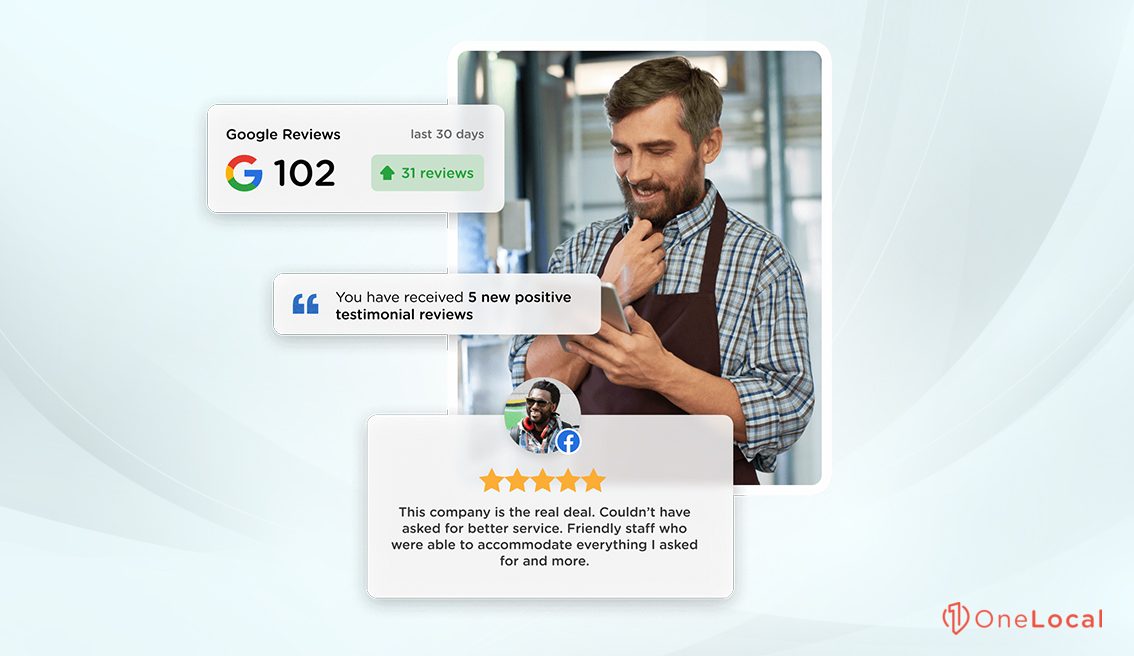
Getting more positive reviews will help you outweigh the negative ones. This process helps convince users that a negative experience is a rarity rather than a systemic problem.
Thankfully, none of these options are mutually exclusive. You can both strive to get more positive reviews and remove negative, fake, and otherwise harmful reviews from your profile. By approaching the problem from both angles, you’ll be able to sculpt a more robust and valuable reviews profile. Google doesn’t necessarily make it easy, but it’s possible. Your company’s reputation is constantly shifting with every new review, and it’s well worth the effort to turn it in the right direction.

